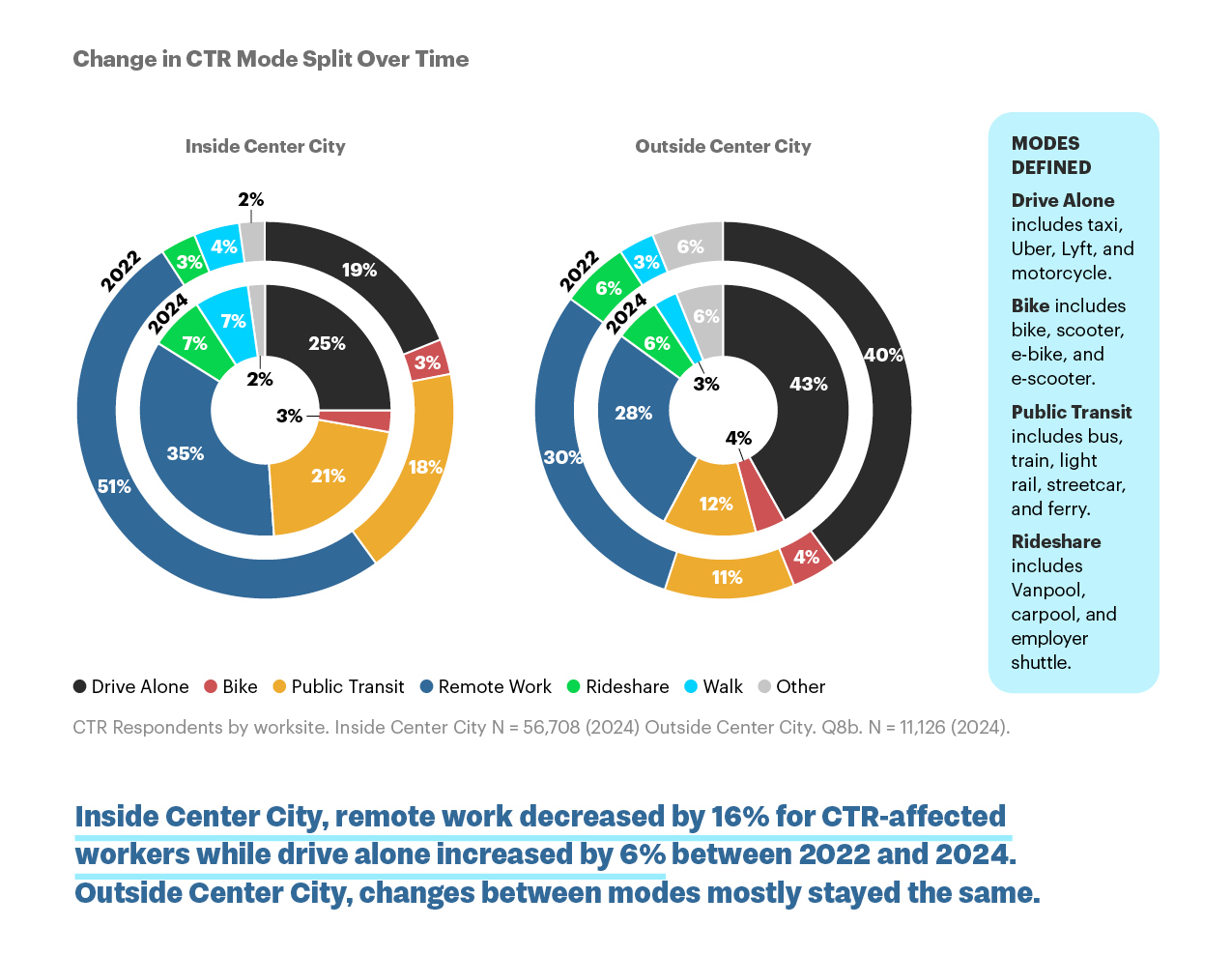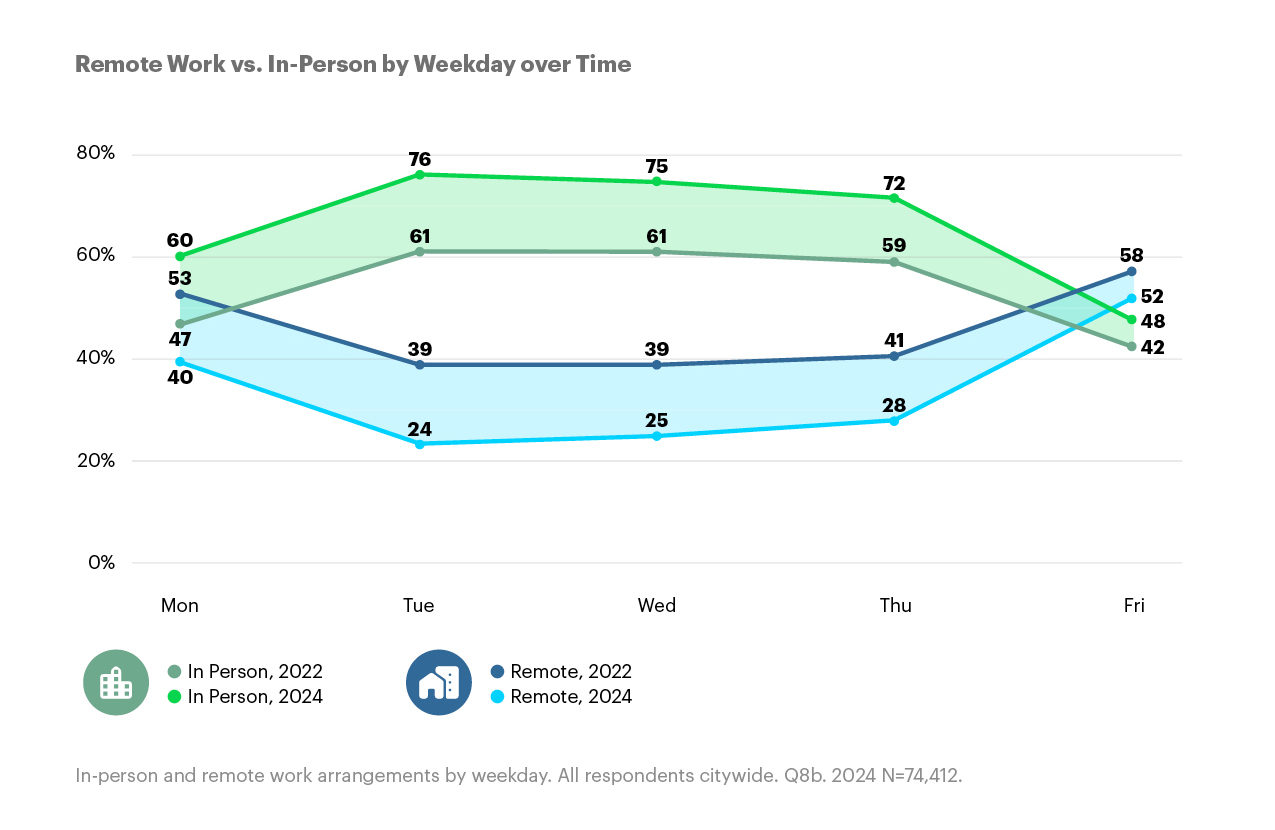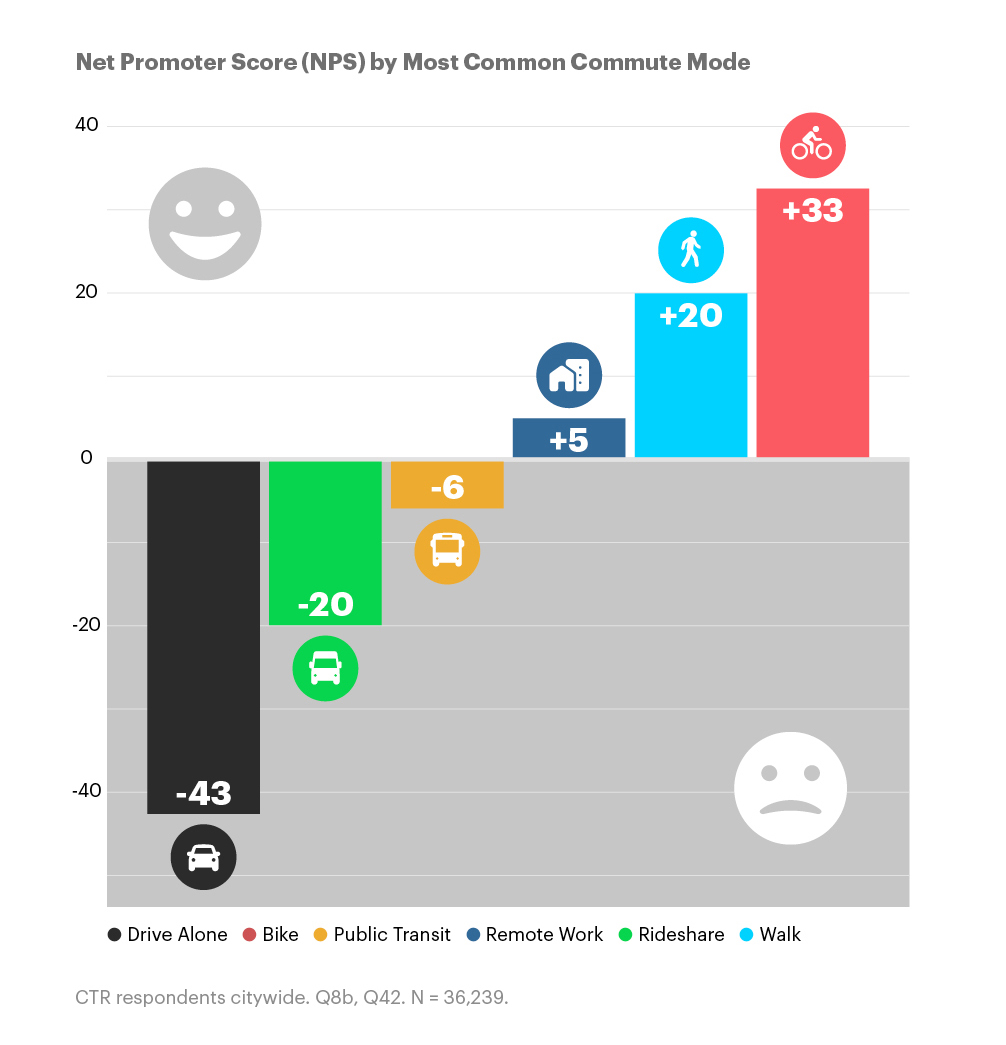By Bart Treece, director of the Mobility Innovation Center
If you hop on the light rail or hit the road during the weekday, it likely feels a little different than it did two years ago. When people adopted telework to stay connected to the workplace during the pandemic, a lot of us thought that working from home would continue to reduce weekday travel for the foreseeable future. Now, trains are packed in the mornings and late afternoons and there are more people driving, biking, and walking around downtown.
In partnership with Commute Seattle and the city of Seattle, the Mobility Innovation Center enlisted the academic talent of the University of Washington’s Department of Urban Design and Planning to capture the latest trends in how people travel for work and other activities in the 2024 Seattle Commute Study. These findings are the result of a survey of city commuters and students at post-secondary educational institutions this past fall, with nearly 80,000 people participating—the richest data set of its kind, anywhere.
A shift back to driving alone
Commute trends are reflective of employer work arrangements requirements, and also commuters who have several factors to consider for how and when they travel. Within the past year, as many employers in Seattle have required staff to be on site for at least a portion of the work week, telework dropped by 8% compared to 2022 responses. For the first time in a decade, Seattle is seeing an uptick in drive-alone commutes, above pre-2020 levels. Mass transit also saw an uptick with more people catching a ride to the center part of the city.

Still, telework seems to influence the weekday commute, with the busiest days being Tuesday, Wednesday, and Thursday. Mondays and Fridays are still popular for telework when it’s an option. It’s worth noting that this survey was launched in the fall of 2024; since then, large employers such as Amazon have started requiring workers to be in the office five days a week.

Why people travel the way they do
There are many factors that we take into consideration for how we travel. In the past two surveys, we found a consistent theme that includes: Time/duration, flexibility/convenience, reliability, and cost/affordability. Other reasons were identified, but the main reasons all make sense.

That felt good! What a “satisfying” commute looks like
Ever get to work and already feel worn out by the trip in? A new question in the 2024 Seattle Commute Survey asked respondents how likely they are to recommend their most frequent commute mode. It turns out that bike commuters scored highest, while folks who drive alone to work were the lowest, as in, “do not recommend.” Want to help staff feel good about an active commute? Secure lockers, bike storage, and showers to make it easier for employees to make the switch and come to work happy and refreshed!

Tracking existing trends and keeping it fresh
The Seattle Commute Study has long been viewed as the go-to resource for insights into how people travel for work in the city. The last two iterations, in 2022 and 2024, take it further by seeking to understand, at a deeper level, the factors that influence commute trips, and other trips people need to take to support their lives.
As travel habits change, it’s important to stay on top of trends and harness those insights to help our city and our region achieve sustainability goals and improve residents’ quality of life. Understanding commutes can help all of us maximize the time we spend on the things that matter most to us. Dive into the full report.
This story was featured by The Seattle Times, Puget Sound Business Journal, KUOW, Seattle Business Magazine, and FOX 13.